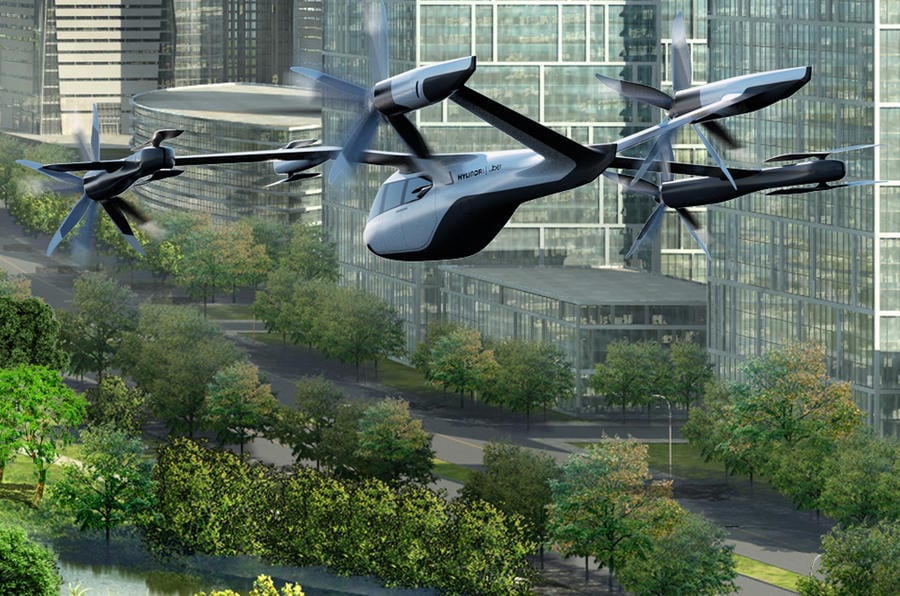
South Korea is planning to begin offering urban air mobility services as early as 2025 in a limited capacity, working with automaker Hyundai and other partners. Photo: Hyundai Motor Group
South Korea plans to have a limited commercial urban air mobility service available by 2025 in an effort to reduce traffic congestion in major cities, according to the ministry of land, infrastructure and transport.
Beginning with just one or two routes — or terminals — in the Seoul metropolitan area, South Korea plans to open ten air taxi terminals by 2030. The ministry expects the UAM market to reach $10.8 billion by 2040, focused on 18-30-mile trips offering transport in connection with buses, the city’s subway system and other forms of mobility.
“The ministry will join hands with Hyundai Motor Group and other local companies to push forward the UAM commercialization project,” a ministry official said, without identifying other companies that may participate.
In January, Hyundai unveiled its S-A1 vehicle concept and role as a vehicle partner to Uber Elevate, indicating interest in markets outside of South Korea such as the United States. The Korean automaker has also created a UAM division, made a series of high-profile industry hires, and pledged to invest $1.5 billion in the air mobility market over the next few years.

Eric Allison, head of Uber Elevate, and Dr. Jaiwon Shin, head of Hyundai’s UAM effort, announce the company’s mobility initiatives at CES 2020. (Hyundai/Uber)
However, Hyundai is targeting 2028 for the commercialization of UAM, beginning with overseas markets — a timeline that doesn’t match the South Korean government’s aggressive 2025 date for initial service. That may mean the government will look abroad to Joby Aviation or other manufacturers whose electric air taxi designs are closer to certification.
The Greater Seoul metropolitan area is a highly promising market for urban air mobility, according Nexa Advisors, which last year released analysis on 75 cities the firm sees as capable of sustaining a UAM market.
Ranked fifth in population density and fourth in gross domestic product, Seoul also has more existing heliports than any other city in the world, according to Michael Dyment, managing partner at Nexa Advisors. Dyment’s firm estimates Seoul will have 94 vertiports for UAM use, with total ground infrastructure costs of $262 million and unmanned air traffic management costs of $458 million — a good ratio of revenue to infrastructure cost.
“We estimate that by 2040 there could be over 7 million passengers processed per year in the Greater Seoul region,” Dyment told Avionics International, with operator revenues reaching $7.2 billion between 2020 and 2040.
Other megacities in Asia are similarly exploring integrating air taxis into their urban transportation networks. In Singapore, the government is working with Airbus on unmanned traffic management, while Volocopter and rideshare service Grab announced a feasibility study to find the “hottest routes” in the city-state as well as the broader Southeast region of Asia. Bell, Japan Airlines and Sumitomo announced a joint effort to similarly develop air taxi services in Japan.